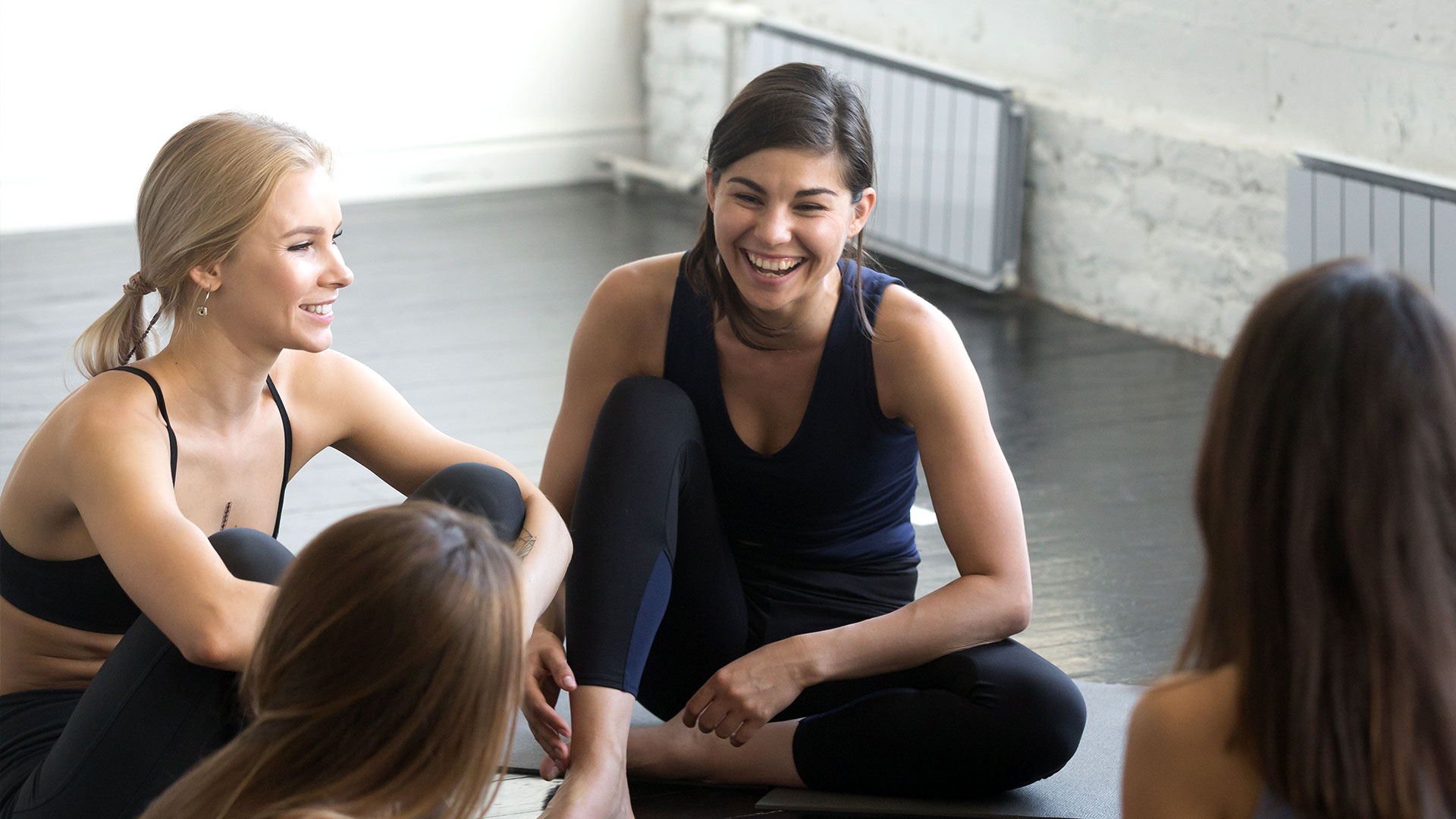We’ve gathered some of our favourite fitness and wellness heroes for you who live and inspire by doing it their way.
International Women’s Day is a great excuse for us to pay tribute to the women empowering other women through fitness and wellness. Our fitness and wellness heroes come from all over the world, they lead, influence and inspire in different ways, but the one thing they have in common is that special ability to motivate others.
This years’ International Women’s Day campaign #BreakTheBias celebrates a world free of bias, stereotypes, and discrimination.
We’ve gathered some of our favourite fitness and wellness heroes for you who live and inspire by doing it their way. Also visit our fitness and wellness booking software page for more information.
- Kayla Itsines
Kayla is an Australian Personal trainer, co-founder of @SWEAT and creator of the Bikini Body Guide (#BBG). She has made a name for herself in the fitness industry with championing body positivity and the release of #BBG, a 12-week programme with its own hashtag.
Her SWEAT app alone has amassed over 30 million downloads according to Techcrunch with over a million people using it on a monthly basis.
Kayla joined the body positivity movement very early on helping women recognise that everyone is unique and that there is more than one path to health and happiness. She has been helping millions make health and fitness a part of their life and currently has one of the largest fitness communities out there.
- Brittne Babe
Former track athlete and now queen of home workouts, Brittne has helped thousands of women with her no excuses approach. In the past 10 years in industry, Brittne has partnered with STRONG by Zumba, Gymshark and Women’s Best to name a few. She launched an online 21 Day Challenge and the Brittcamp.
Brittne is an influencer who has gained her name due to her very impressive fitness skills. She showcases this well on her YouTube channel giving tons of inspiration for easy-to-do yet effective home workouts.
- Natacha Oceane
Youtuber and fitness influencer from London, Natacha has made a name for herself with the release of her science-based training guide, CUT, which has become very popular among her followers. She has now released 4 guides since.
Natacha makes plyometrics look super easy and shares her training routine including recipes, daily. The combination of her exercises has many benefits such as stimulating metabolism and increasing strength.
Last May Natacha donated all her May’s YouTube ad revenue to support causes fighting racism.
- Davina McCall
Former Big Brother UK presenter, Davina has been showing off her age-defying body across social channels with workout videos and recipe ideas. Her goal is to encourage everyone in the UK to be healthier and more active whilst having fun.
Over the past few years, Davina has become a UK fitness influencer and has gone to launch Own Your Goals. Most recently she announced a partnership with @Actionmedres for her charity ride Davina’s Big Sussex Bike Ride this July, raising money for sick babies and children.
- Cassey Ho
Creator of Pop Pilates, a fusion workout consisting of highly-focused movements, Cassey has helped over 5m people transform their bodies online. These days Pop Pilates has become a global sensation and has one of the largest fitness communities out there.
Her mission to get people stronger hasn’t changed since she launched her YouTube channel and she has been claimed to modernise Pilates, making it truly accessible to everyone following her.
- Cat Meffan
Ex-gymnast and dancer now turned yoga teacher, Cat first launched a fitness and travel blog named Imperfect Matter before launching My Soul Sanctuary. My Soul Sanctuary is a platform to inspire yoga practice and personal growth where she shares daily affirmations or mantras and yoga poses.
She has had collaborations with some big fitness brands including Nike, Sweaty Betty and Zico Coconut Water.
- Tara Mia Simich
Founder of The Jungle Body a global movement-to-music company offering a range of soul-igniting and beat-driven fitness programmes for everyone in 20 countries around the globe. Tara became addicted to group fitness whilst living in New York and attending fitness classes. On her return to Australia, she was determined to create a fun and sweat workout programme and Konga was born. A total of eight programmes have since then been created The Jungle Body’s mission is to empower women to feel good about themselves.
- Rachael Brathen
Originally from Sweden, Rachael attended her first meditation retreat at age 18. From there she continued visiting yoga studios very week looking to get rid of some the begative memories from childhood.
She then went on to found in 2010 the Yoga Girl®. A movement looking to provide support for healing and expand self-love. The Yoga Girl culture is to allow each person to be who they truly are and it has now a vast community of dedicated practitioners from all over the world.
- Charlee Atkins
Charlee is a New York City-based fitness expert, certified by both ‘Certified Strength and Conditioning Specialist’ and ‘Certified Functional Strength Coach’. Her time at SoulCycle led her to set up Le Sweat, and what initially started as a fitness blog quickly evolved into a community of fitness enthusiasts.
She inspires thousands of people to move daily through motivational posts and informational videos. In 2020 she launched Le Sweat app TV.
She has been featured in top magazines such as Women’s Health, Cosmopolitan and Men’s Health.
- Wendy Ida
Wendy pushes the standard to prove that age is just a number. At 65 years old she holds two Guinness World Records, one for the Oldest Active Instructor and the other for the most burpees in one minute, a whopping 37.
However, Wendy didn’t start her fitness journey until she reached 43 years of age in a quest to lose weight and overcome a past abusive relationship. Today she holds an incredible record with top awards at NPC Body Building and Figure Championships.
- Svava Sigbertsdottir
Icelandic-born Svava is an advocate that if you want things to happen, you must step up and make it happen. She released The Viking Method after trying many different fitness concepts and realising that a combination of them all would give her the lean tight body she was after.
For Svava however is not about looking a certain way but rather feeling confident, powerful, agile, strong and quick. A bold warrior at heart, Svava brings her Viking roots to her training and encourages people everywhere to show up for themselves.
- Brooke Siler Pilates
Author of The New York Times’ best-seller The Pilates Body and creator of Tensatoner™️. Fitness trainer to the stars include supermodels Kate Moss, Liv Tyler and Amber Valetta.
Brooke is at the forefront of the Pilates community having trained with protégée Romana Kryzanowska at Drago’s Gym in New York.
- Nadia Alkoc
Zumba®️Jammer and personal trainer, Nadia brings great energy to her social media accounts with her vibrant style flying the flag for all Zumba enthusiasts in Scotland and beyond.
- Claire Burlison
Founder of one of the biggest fitness concepts in the UK, Clubbercise a dance class with neon lights and uplifting club anthems. Claire set up her business in 2013 and what started with 2 friends now has around 100,000 people train every week to the biggest and best dance tunes.
Claire is an inspiration to all those women out there who start a business from scratch and have the vision and determination to make it a success.
- Rachel Holmes
Group fitness educator and presenter, choreographer, coach and mentor. With over 30 years in the fitness industry, Rachel helps fitness professionals build a successful business and teach amazing fitness classes. Rachel has released over 50 instructional DVDs and many fitness programs for the fitness industry.
Rachel’s extensive knowledge in both the applicable fitness world and the operational aspect of growing a business means that she can be a valuable resource for anyone looking for the next steps.
For more information on our dance class management software and how it can help your yoga, pilates, dance or personal training business. Get in contact to book a demo or start a free month.
dance class management software










